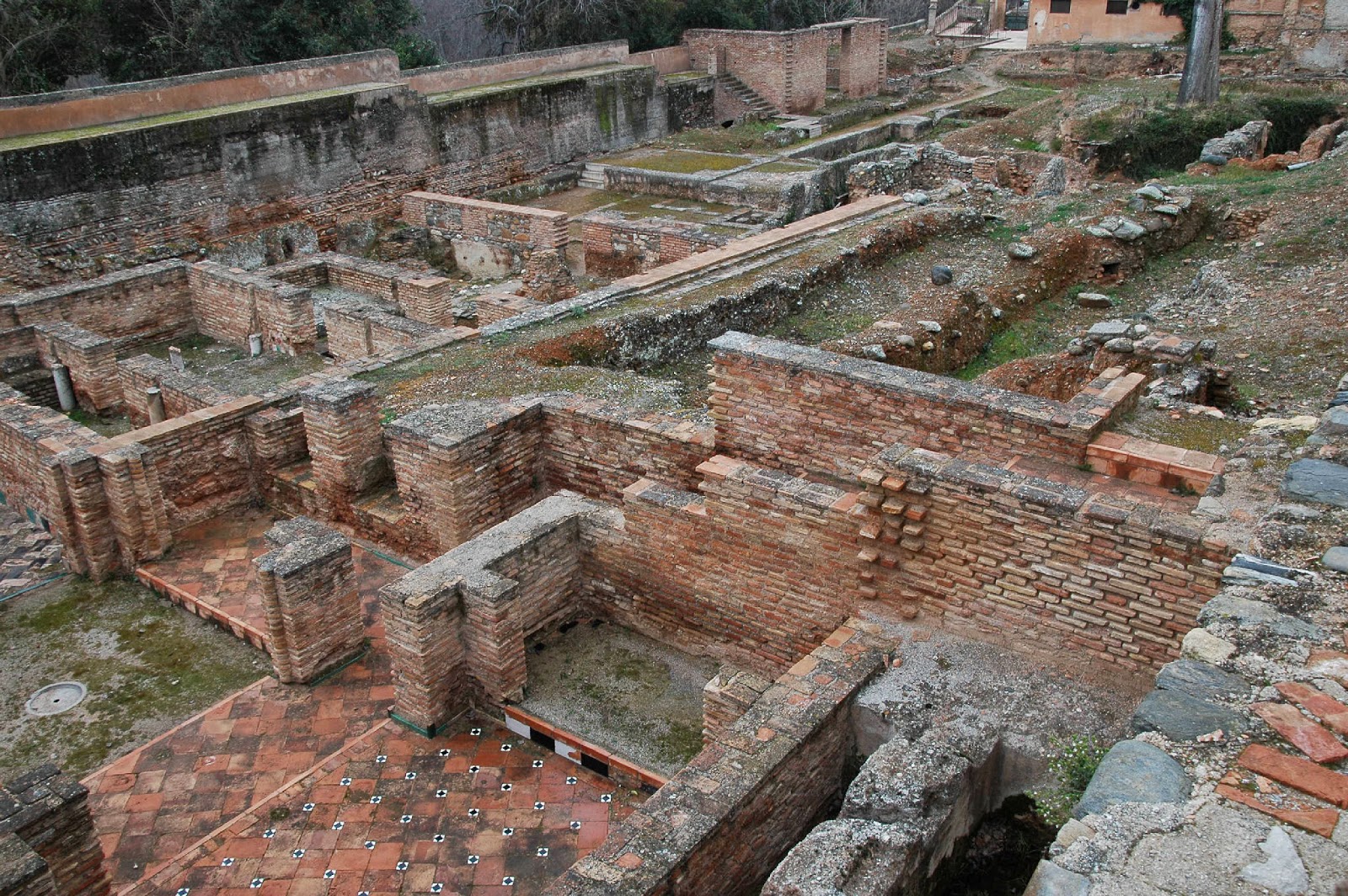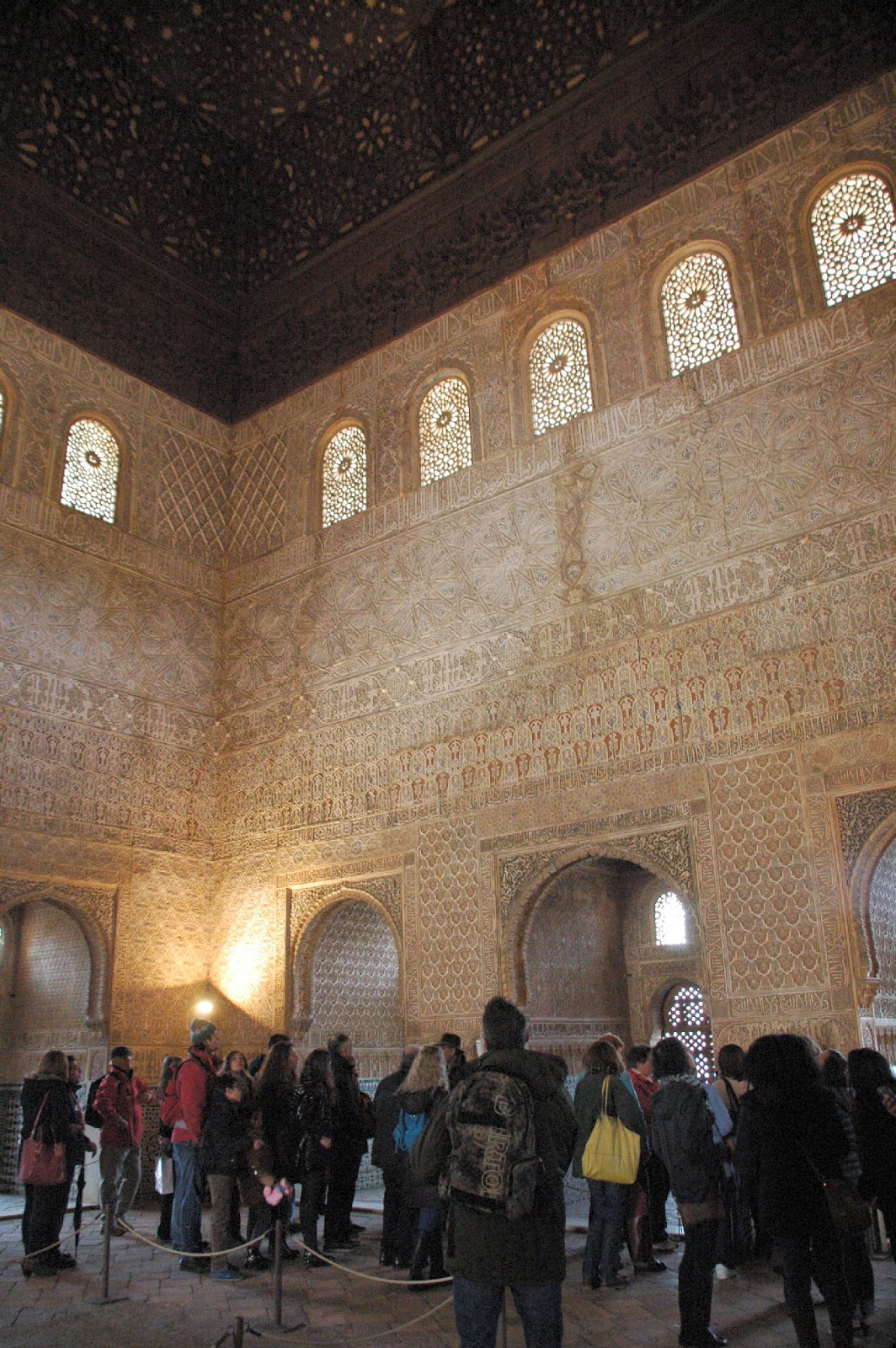Today we went up to the Alhambra. We met Siggy and Doris out the front of the campsite, and our booked taxi arrived to take us up there. Splitting the €10 fare four ways made it quite economical!
When we arrived, we saw queues starting to build up at the credit card ticketing offices, but no-one at the cash windows, so guess where we went! There was no trouble, no delay, and we got straight in, with our entry time for the Palacios Nazaries (which has timed entry) at 11.30am. This gave us time to walk around much of the gardens and the Alacazara before moving on to the Palace! Not a bad option.
When we arrived, we saw queues starting to build up at the credit card ticketing offices, but no-one at the cash windows, so guess where we went! There was no trouble, no delay, and we got straight in, with our entry time for the Palacios Nazaries (which has timed entry) at 11.30am. This gave us time to walk around much of the gardens and the Alacazara before moving on to the Palace! Not a bad option.
The weather wasn't totally friendly, with a little intermittent drizzle. But this meant that the lighting was very even, so photography, although a little difficult at times, was certainly rewarding!
We explored the Medina, the old city within the walls of the Alhambra, represented now only by ruins, and went on down the street to see a virtual village (mainly souvenir shops and hotels) before we got down to a square and came to the Palacio Carlos V. This palace, begun in the 1500s, was never completed, and it was only roofed in the late 20th century! It's square on the outside, but has a huge circular courtyard inside. When we went into it, we were wondering whether Carlos V had wanted to live in a bullring!
From this Palace, we went across the square to the Alacazara, the old Moorish fortress at the northernmost point of the complex. On the way, we passed through La Puerta del Vino, a gate that had no military function, but which was only to divide aesthetically different parts of the complex. This gate is the subject of Debussy's prelude La Puerta del Vino.
While on cultural links, we can't fail to mention Tárrega's magnificent guitar study Recuerdos de la Alhambra, and we can't ignore Washingon Irving's Tales of the Alhambra, written while he was actually resident in the Nasrid Palace!
While on cultural links, we can't fail to mention Tárrega's magnificent guitar study Recuerdos de la Alhambra, and we can't ignore Washingon Irving's Tales of the Alhambra, written while he was actually resident in the Nasrid Palace!
The Alacazara is unmistakably of Nasrid construction. The tallest tower, Torre de la Vela, was used in Moorish times as a minaret, and in later times as a viewpoint from which to supervise the agricultural enterprises around Granada. When the Catholic Kings finally took Granada in 1492, it was here that their flags were flown.
It was now getting on to 11.30, and our time for going in to the Nasrid Palace. We joined the queue, only to be joined by Siggy and Doris. After a little comparing of experiences so far,we were let loose on the Palace. This is undoubtedly Madéjar, but totally different from the Mezquita of Córdoba. Apparently this palace is somewhat freer of the Byzantine influences that characterise the Cordoban mosque. Although we may not have experienced the WOW factor of Córdoba, the Nasrid Palace is totally gorgeous. One of the main impressions is that of water — there are water features thoughout the whole structure, water features that create a wonderful sense of calm and repose. And the walls and ceilings are a symphony of Arabic calligraphy and decorations that at times remind you of the stalactite ceilings of a magnificent cave — like the one we recently went into in Gibraltar!
When we got to the Lion Courtyard, built by Muhammad V in the late 14th century, we were in what is regarded as the most sublime part of the palace. It is a simple rectangular courtyard, surrounded by colonnades of Nasrid pillars and arches, with water featuring throughout. In its middle is the Fountain of the Lions, a huge alabaster basin supported by 12 marble lions. Does this represent the 12 tribes of Israel, or the 12 houses of the Zodiac, or is it a representation of the points of the compass? Whatever it is, it's magnificent!
We wandered the palace, going into the Throne Room of Yusuf I (1333-1354) — another exquisite piece of Nasrid decorative architecture — before we finally exited and started exploring the gardens again. The drizzle, a feature of the day up to now, had virtually disappeared, and the skies were starting to show shades of blue! We walked around to the Generalife Towers, the summer palace of Muhammad II (1273-1302). We met Siggy and Doris coming away from these, and they were most enthusiastic. The gardens here are recent, only dating back about 60 years — back to the time that the Generalife came from private ownership and into the control of the Patronato de la Alhambra y Generalife. The gardens are delightful, once again full of water features, and large plantings of topiarised cypress trees — not entirely successful, as apparently the site is not well suited to cypress. They are in the process of revising this garden — whether they do something with the soil itself, or drain the water differently, or plant something other than cypress, is still under consideration. But the gardens are quite delightful as they are! The garden is on a steep slope (which facilitates running water features), but the plantings have been established on a series of terraces — for Suzie, this meant more steps!
We finally left the Alhambra, took a bus into town, walked around to where we could catch a bus back to Camping Reina Isabel, where we settled back into the van and started getting this blog entry up to a publishable form! The walk between buses allowed us to see the "high Street" of Granada, which, not surprisingly, is much like the high streets we have seen throughout our travels. Amazingly, as we pulled up outside the campsite in our bus, we saw Siggy and Doris alighting from their taxi on their return from the Alhambra!
We were getting used to the idea of winter, but as we were walking around the gardens of the Alhambra we saw the appearance of early spring blossoms. We've been seeing almond blossoms in the Algarve and Andalucia, but this is a clear sign that we may be on the path to a return to warmer weather — although the Algarve and Andalucia are warmer anyway, so it just might be a confirmation of the sense in our moving southwards for the winter!
Distance driven — today, nil; to date, 13,756 miles ( 22,139 km )


























































Lovely and memorable indeed. The blossom looks quincey. Granada! I keep thinking of the song. I sang in the chorus cf Don Carlos at Conservatorium many years ago.Have 3 days of RHD workshops at the UNi library for the next 2 days, (did one today) Excellent quality and enjoyed same. Have fun, Isn't the Alhambra great! Love Cathy
ReplyDeleteMy email is jone0006@flinders.edu.au. love me, Cathy
ReplyDeleteNow you have my email, what about me having yours please? I can't sleep what with pain in he back and all, so I did some more lit light ghemsearch. I need a able about a mile long to sort the damned articles into like mind ed groups before i can code and hgihlight them OhWell, Endnote class 1 on Wednesday arvo.You can sticky note them even. Love to ya'll. Cathy
ReplyDelete